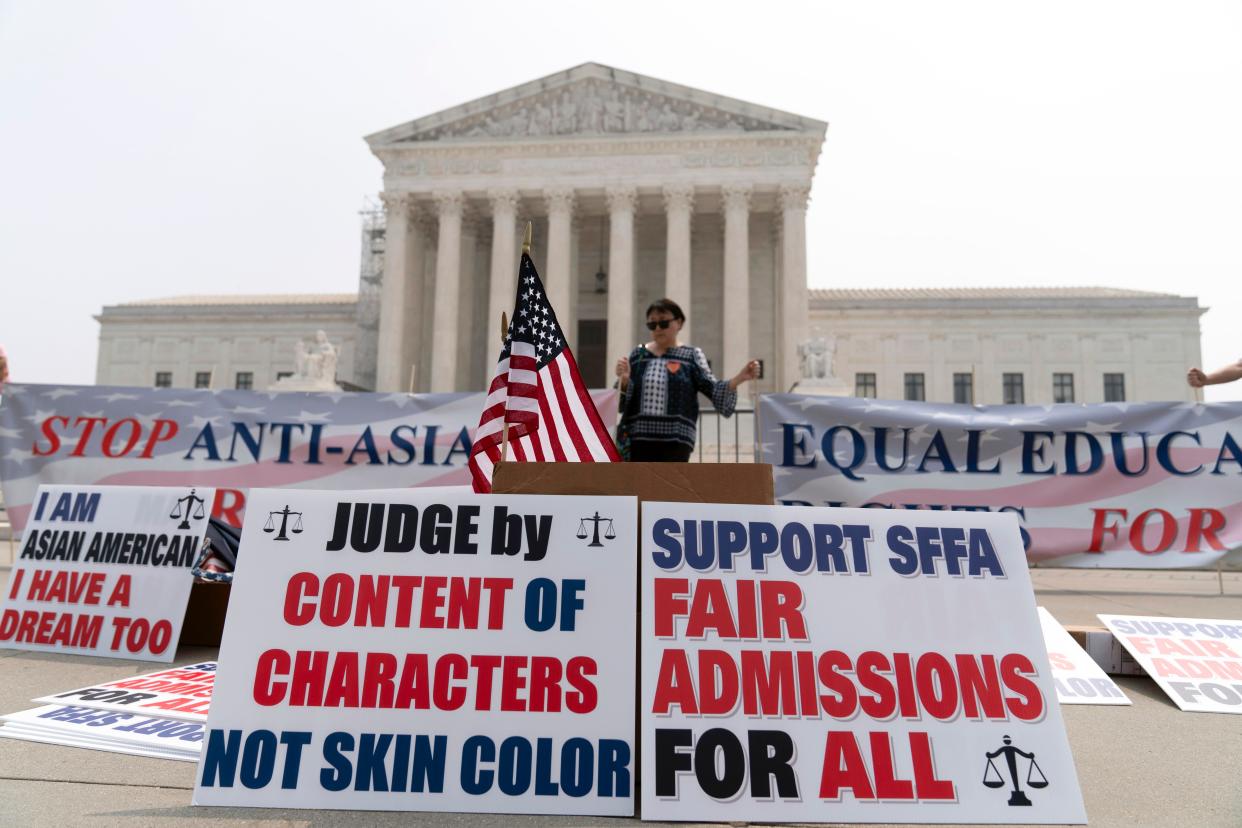Why affirmative action decision wasn't all bad for Black people in Delaware, U.S.

In the Students for Fair Admission versus Harvard and the University of North Carolina decision, the Supreme Court of the United States ruled that colleges and universities can no longer use race as a primary factor in granting admissions. It decided that the current use of "race" discriminated against white and Asian American applicants and that race-conscious admissions violated the Equal Protection Clause of the Fourteenth Amendment.
The issues fell into two categories. The legal issue regarded equal protection of the law, and the political issue was about applying a remedy — affirmative action — and using racial categorization to address racial disparities.
Before we start feeling dejected over SCOTUS' decision regarding affirmative action as a remedy for racial disparities in higher education, here are a few things to consider.
First, the program's purpose was for the government to act positively to "ensure" equal opportunity and combat racial discrimination in education and employment. Racial discrimination, along with structural and systemic racism, remain serious problems in America today, sixty years after affirmative action was introduced. Accordingly, it was time to take another look at Affirmative Action as a remedy.
Second, Blacks are 23% of Delaware's population but only 6% of the University of Delaware'sstudent body, and that percentage has failed to come close to 10%. Affirmative action in higher education doesn't work if the quality of grade school education received by Black children is subpar. It is time for new lawsuits in the spirit of Belton (Bulah) v. Gebhart and Parker v. University of Delaware.
Third, "Affirmative action" results have not been evenly distributed across the Black community since the 1990s. Many of UD's Black students come from upper-working or middle-class families. At the same time, many of them are second-generation African and Caribbean immigrants. Only a handful of the Black students at UD are from resource-deprived and lower working-class Black households and communities like the Eastside or Northside of Wilmington.
Fourth, SCOTUS did not say that race could never be used. What the ruling said was that race could not be used as an "explicit factor," but it could be used as an "implicit factor." Thus, race can still be used, but its use must be subtle and used as a secondary factor in admissions. The Courts left some wiggle room, and there is hope if there is wiggle room.
Finally, The Court implied that Harvard and the University of North Carolina did not demonstrate a "compelling interest" in using race in admissions. Additionally, the ruling suggested that the method used by UNC and Harvard (a checkoff box for race) was unconstitutional and did not meet a narrowly tailored requirement. In other words, SCOTUS may have raised the legal bar for meeting strict scrutiny, but they didn't put it out of reach.
Affirmative action has been a tool in the struggle for Civil Rights, but it was not the toolbox. While SCOTUS has laid the political concept and politics of affirmative action to rest for now, the principle of affirmative action must continue to evolve. It is a new day, and we need modern-day thinkers to help sort out how to increase opportunities for Blacks in higher education and the workplace.
Regarding race in society, SCOTUS was a bit premature in ruling that race could no longer be used as an explicit factor in admissions. By making race an implicit factor in admissions, the Court seriously downplayed the significance of race in society. Justice Ketanji Brown Jackson noted that we cannot ignore the major racial disparities in education, health, wealth and well-being that were "created in the distant past but have indisputably been passed down to the present day through the generations." For example, the average white household in Delaware has roughly $30,000 a year in income, more than the average Black family. That kind of racial income inequity is hard to ignore.
The Court's legal remedy seems to want to move the nation toward colorblindness. The problem is that you can't be color-blind in a multi-racial society where race is historically ingrained into its core fiber. America has spent 400 years giving meaning to race, and suddenly, we want to pretend it isn't here.
Race still matters, but maybe the SCOTUS ruling suggests we should reconsider and rethink how it matters. Perhaps the takeaway from the ruling is that the political remedies to racial disparities must focus more on inequities than inequalities.
Theodore J. Davis Jr. is a professor in the department of political science and international relations at the University of Delaware.
This article originally appeared on Delaware News Journal: Affirmative action decision: SCOTUS ruling not all bad for Black people

